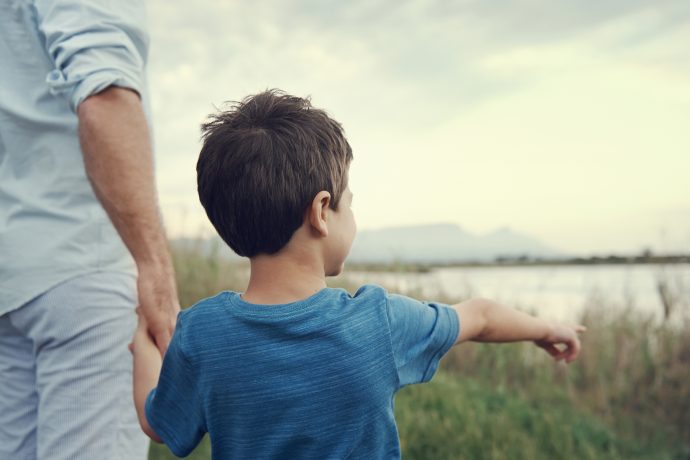“Mom, what’s Ash Wednesday?”
“Well, sweetie, it’s the first day of Lent, when we get ashes put on our forehead.”
“Why?”
“Well, because . . . it’s . . . you see, the ashes represent. . . . A long time ago, in a galaxy far, far away—Hey, how about a popsicle?”
What in the world is going on with Ash Wednesday? How do we talk to our kids about it? For that matter, how do we talk to other adults about it? From dust I came, and to dust I’ll return? Great, now I feel awesome.
If you’d like to have an intentional conversation with your kids before ashes are imposed onto their foreheads and they’re left wondering when their bodies will suddenly be turning into a pile of dust, here are some thoughts on how to communicate with children what Ash Wednesday’s all about. I know this topic can seem heavy. Rest assured that kids can handle these conversations when they’re initiated and engaged with patience and grace.
Scripture makes it clear that sin requires one thing as payment, and that one thing is death. Death exists because sin exists. Therefore, in the absence of a relationship with Jesus, we are required to pay for our own sin with our own death. However, when we have faith in Jesus—who conquered death with his sacrifice—and we believe in him in our hearts and confess with our mouths that he is Lord, we are given the gift of living in his kingdom. That’s his kingdom now, and forever.
During Lent, we dwell in Jesus’s story. We dwell in his miracles, his love, and his ultimate sacrifice. At the end of Lent, we celebrate together. Easter is a celebration of Christ’s victory over death and the gift he offers us—victory over death. On the cross, Christ took our death punishment. Therefore, we live in the hope of heaven. We know that, because of the cross, we will have the gift of eternal life.
That’s good news.
But the good news is so good because the bad news is so bad. Without the cross, death is the end of the story.
So, on Ash Wednesday, a pastor may put ashes on your forehead. These ashes represent death and life.
The pastor might say something like, “From dust you came, and to dust you will return.” This is just a reminder that we are mortal. Nobody lives forever. We are flesh, and flesh dies.
Then the pastor might say something like, “Repent, and believe in the good news of Jesus.” This is a reminder that the cross, which you are now wearing on your forehead, is the only thing that saves us from death. Even though we will die someday, that is not the end of our story. Because we have hope in Christ’s sacrifice and resurrection, we are not stuck in the story of dust.
Give your kids lots of opportunities to ask questions this Lenten season. Learn together. Grow together.
On Ash Wednesday, we are reminded of hope. We are given the cross as a reminder that Jesus’s victory can become our own, and our lives don’t have to end when our bodies turn to dust again. We are eternal. We can choose eternal ashes or eternal life.
You may not explain all of this to your kids right away, but hopefully this will give you a good foundation to build on when you’re sitting in a pew in a quiet sanctuary with your six-year-old, who tugs on your sleeve and whispers, “What’s Ash Wednesday?”
Give your kids lots of opportunities to ask questions this Lenten season. Learn together. Grow together. Your ashes call attention to both the bad news and the good news—death and life.
For younger children, having a simple script can be helpful. Your answer might sound something like this: These ashes make us think of death. We are part of this world, and someday we will die. But do you see how the ashes are being made into crosses? Jesus is more powerful than death! He beat death when he died on the cross and came back to life! If we love him as our Savior, King, and Friend, we can live with him now and forever—even after we die! Ashes mean death, but the cross means life!





2 Comments
Lee Seitter
I always had an idea of what Ash Wednesday was, but now I know for sure. 🙂 Thank you!
Kyle Tyler
Thanks for reading, Lee! I learned a lot in preparing to write this, as well.